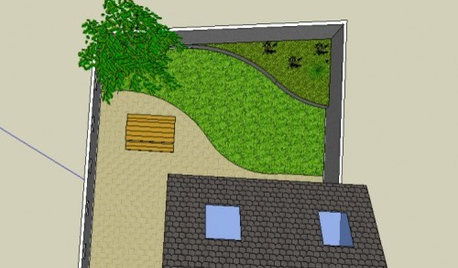Hay Storage Question
skippitydodog
16 years ago
Related Stories

KITCHEN DESIGN9 Questions to Ask When Planning a Kitchen Pantry
Avoid blunders and get the storage space and layout you need by asking these questions before you begin
Full Story
ORGANIZINGPre-Storage Checklist: 10 Questions to Ask Yourself Before You Store
Wait, stop. Do you really need to keep that item you’re about to put into storage?
Full Story
5 Questions for Design Stars
Add Your Ideas for Outdoor Storage, Cheering Up a Fireplace and More
Full Story
5 Questions for Design Stars
Houzz Members Need Your Help With This Week's Design Dilemmas!
Full Story0

ORGANIZING4 Questions to Help You Organize Your Favorite Photos
Organize your keeper photos with a system that's just right for you, whether it's in the cloud or you can hold it in your hand
Full Story

REMODELING GUIDESPlanning a Kitchen Remodel? Start With These 5 Questions
Before you consider aesthetics, make sure your new kitchen will work for your cooking and entertaining style
Full Story
REMODELING GUIDES13 Essential Questions to Ask Yourself Before Tackling a Renovation
No one knows you better than yourself, so to get the remodel you truly want, consider these questions first
Full Story
FEEL-GOOD HOMEThe Question That Can Make You Love Your Home More
Change your relationship with your house for the better by focusing on the answer to something designers often ask
Full Story






nhsuzanne
Dibbit
Related Professionals
East Rancho Dominguez Landscape Architects & Landscape Designers · Bethel Park Landscape Contractors · Beverly Hills Landscape Contractors · Braintree Landscape Contractors · Fair Lawn Landscape Contractors · Inglewood Landscape Contractors · University City Landscape Contractors · Englewood Fence Contractors · Tulsa Fence Contractors · Voorhees Fence Contractors · Franklin Fence Contractors · Baker Decks, Patios & Outdoor Enclosures · Brooklyn Park Decks, Patios & Outdoor Enclosures · St. Louis Decks, Patios & Outdoor Enclosures · Sun Lakes Decks, Patios & Outdoor Enclosuressnycal
tejas_pacas
skippitydodogOriginal Author
dreamgarden
goodhors
nhsuzanne
Dibbit
Ninapearl